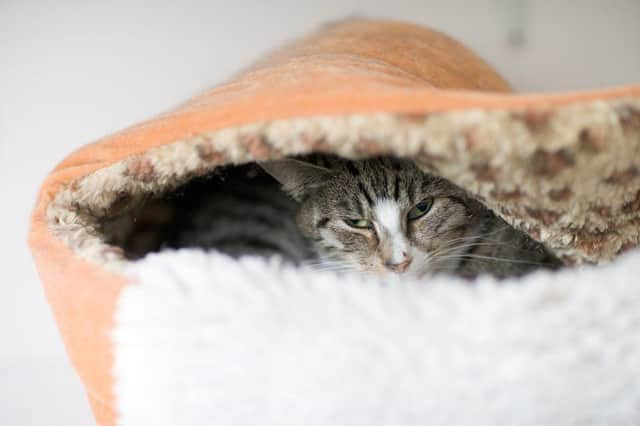Developing unhealthy habits


We are regularly contacted with what we refer to as common cat behavioural problems. The most common being house soiling, this is where the cat has suddenly begun to urinate, spray or defecate in the house and return to the same spot time and time again, even when a litter tray is in place for them.
Like all unhealthy habits, there is almost always an underlying reason as to why this happens. Often, stress is a major factor that leads to a “change” in a cat’s behaviour in either the home or its surrounding area. This can be as simple as a new cat in the neighbourhood, a new baby in the house or perhaps a new pet, such as an additional cat/kitten or even a puppy. So, how can you tell if your cat is stressed and what should you do?
Advertisement
Hide AdAdvertisement
Hide AdThe first step you must take as a responsible cat owner is to ensure your cat undergoes a full health check by a vet. By doing this a vet can specifically rule out any underlying medical conditions that can lead to the behaviour problem. The vet may suggest getting a urine sample tested if urine is involved or a faecal sample into the vet practice. Once the vet has ruled out any medical reasons and identified the cause, there are several different approaches that can be implemented to tackle the problem.
The litter tray is possibly the simplest solution. If you don’t have one then consider getting one! If the problem is a new territorial cat in the neighbourhood, then your cat may be happier to use a litter tray indoors reducing the stress levels.
For cats that are defecating next to the litter tray but urinating in it, it could be down to the litter type being too hard on their paws. Cats prefer the litter to be about 3cms deep in the tray and have a reputation for being fastidiously clean, some preferring the litter tray to be cleaned after each use.
As your cat grows from a kitten to adult he/she will require a much bigger tray. A cat requires space to turn around and dig to allow the recent matter to be covered up.
Advertisement
Hide AdAdvertisement
Hide AdIf the cause of recent “change” is that a new addition has arrived in the family and the cat is urinating and defecating in different areas of the home, then you will need to add in some extra litter trays. By lining them up in a row in different areas of the home then a cat will think it is just one litter tray. You will soon see what tray is being used for what, often they will urinate in one and defecate in another. Once the problem starts to improve then you can slowly remove one at a time.
Please remember that your cat may not be prepared to share the litter tray with another cat/kitten in the household and an extra litter tray should always be introduced.
Finally, privacy and the location! Cats often prefer a quiet area for their litter tray, away from food and water!
For more information on how to combat several types of behavioural issues visit www.cats.org.uk
For cat or kitten adoption, assisted neutering help and general enquiries contact us on 0345 3712750.